The obvious benefit: how and why to use the service approach beyond IT (Part 3)
I continue to share my experience, how the service approach leaves the IT sphere (how to manage IT service processes) and integrates with other internal services of the company.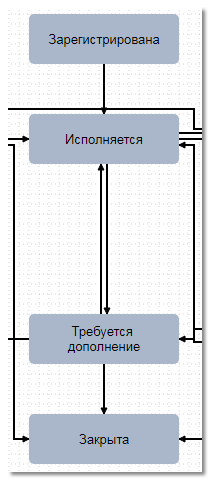
What is useful service approach and what "pitfalls" are waiting on this path I told. Today - no theory, only practical cases.
I will consider examples of companies that used service desk class systems in various processes. Basically, of course, in IT.
It is even more interesting to see what has changed when the need for automation reached other service departments.
I will describe the cases with the answer to the questions:
- how the problem is formulated;
- what goals are set with the customer;
- what has been done during the project;
- what are the results.
Case 1. Automation of the processing of requests in the contractual department
What is at the start
The company has implemented a service desk product. Information about the positive experience of its application in non-IT sphere periodically found its listener. Or rather, its internal customer. In IT, the task came from the deputy general director: to create a module similar to the service desk for the contract department.
I contacted the customer to understand the problem. Applications for the preparation of documents received by the department by e-mail. Their initial processing is not systematized, it diverted the resources of the performers (often mistakenly), the timing of training was regularly violated. In general, chaos reigned, and the management was tired of it. It's time to restore order. Without attracting additional resources and, as always, quickly.
Set goals
- To increase the control over the execution of applications for registration of contracts and additional agreements to them.
- Take into account and regulate the load of employees.
- Implement reports.
I note that the company at that time used a system for working with contracts. But the functionality in question was required before the documents were entered into this system. Why did you decide not to refine the system of working with contracts? The answer is simple: inconvenient, long, expensive.
What is done
We, as performers and customer, were located on geographically separated sites, communicated by telephone and mail. As a result, saved on business trips.
Prepared a technical task with the customer. The basis was taken of the type of request “Service Request” in the system with a basic life cycle.
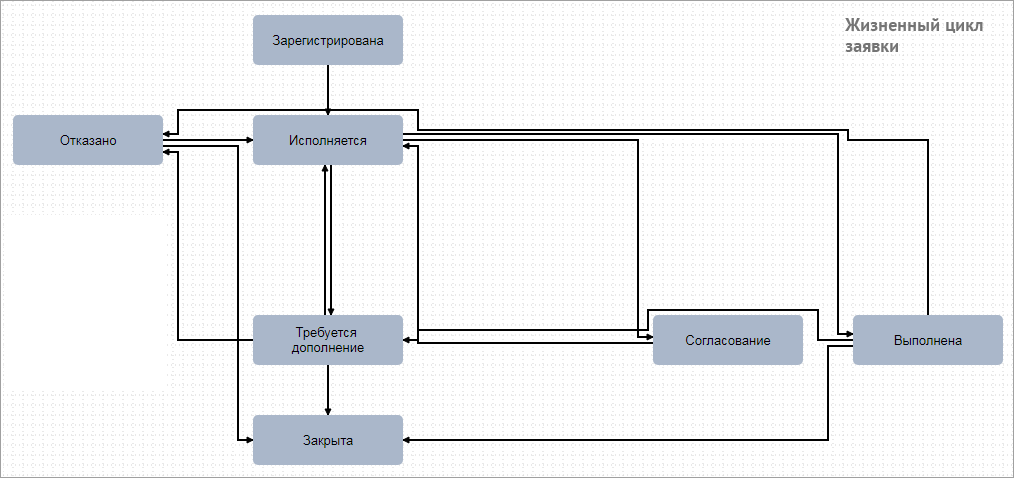
')
Identified additional attributes needed to work with the application. Concretized data on responsible, conditions for changing statuses and alerts. Separately discussed the key metrics for the reports and started the setup phase.
It took 2 weeks to set up a new functional. And this is taking into account all the work in the test database. To begin, the creation of applications in a new way presented to the test group. But due to the convenience and simplicity of the interface, the customer asked to launch everything into the product 3 days after the start of testing.
The first applications in the system appeared in November 2017. At the beginning of 2018 - there are already more than 500 of them.
Summing up
- The process of establishing and agreeing contracts in the corporate system is faster.
- Application execution control - at each stage.
- Based on the analysis of employees' load, applications are promptly redistributed among specialists, which is valuable for urgent requests.
- Heads of departments use tools to control subordinates for interaction with counterparties.
- Reporting allows you to accurately assess the current situation on applications and build work with them.
And an additional bonus to the CIO - the CEO was reported on the work done, praising IT.
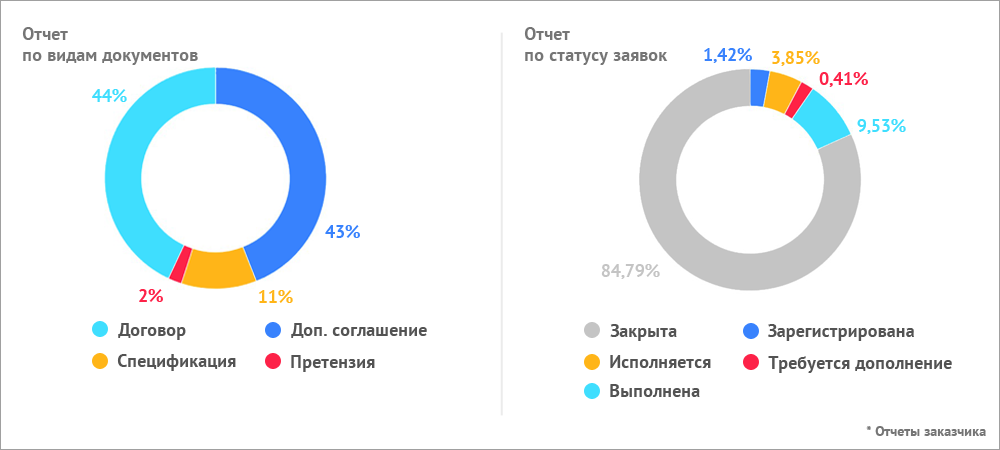
Case 2. Automation of the processing of requests for the preparation of acts of reconciliation in the accounting
What is at the start
The staff of the unit engaged in the processing of acts - 4 people. Time to prepare documents is unpredictable. The process is opaque:
- the regulations are not introduced;
- there is no statistics on the number of incoming requests;
- There is no uniform matrix of loading of personnel.
Set goals
- To achieve a reduction in time for the preparation of acts of reconciliation.
- Make a calendar of downloads of performers: with work deadlines, statuses, the number of distributed and unallocated tasks.
What is done
Used the existing service desk system. We created new objects in it and set up the process to meet customer requirements. Synchronized with the ERP-system in the actualization of directories.
Already in the first steps of operation, managers received a “screen” with a real number of requests and download of performers.
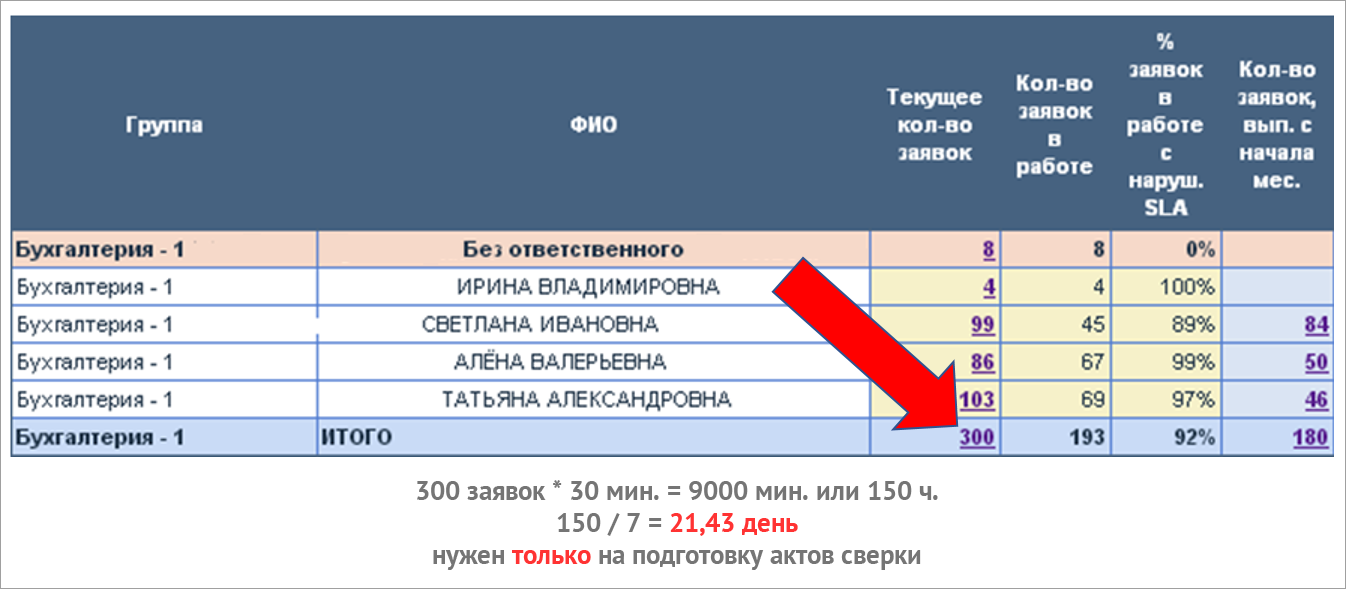

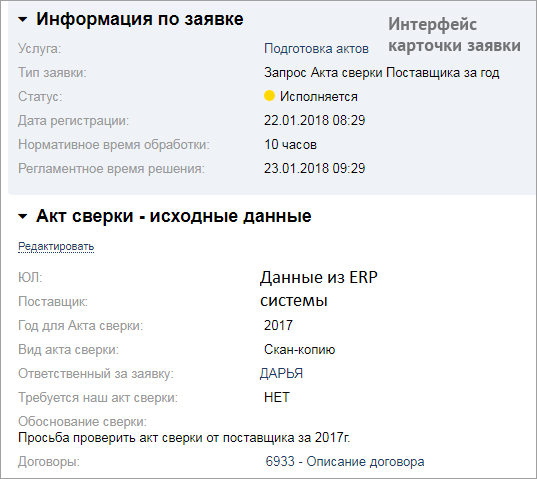
Summing up
- Preparation of acts of reconciliation is carried out according to the regulations.
- At peak times, the manager plans the work of the executives in advance so that internal customers receive documents on time.
- Statistics are accumulated in a single system, an archive of processed documents has appeared.
- The risk of loss of service data during the dismissal of employees is excluded.
- The whole history of actions is recorded in the service desk. All disputes are resolved on the basis of this information.
Case 3. Automation of the processing of applications for compensation for rental housing
What is at the start
The company has introduced a payment compensation system for rental housing. A lot of time and resources were spent on the coordination of such requests by internal services. The review process was regularly delayed. The acquisition and implementation of a special approval management system is too costly (in terms of time and money).
The company has already used the service desk class system to manage IT applications. But no one tried to adapt this system for the approval process. We have proposed a solution.
Set goals
- Reduce the time for reconciliation of memos by half.
- Abandon paper workflow.
- Exclude shipping costs for the transfer of documents.
What is done
Considered the specifics of the work of managers who are often outside the office. It is more convenient for them to negotiate from a mobile device. To do this, the service desk made a new mail processing algorithm. In addition, the approval process must be managed - a special role has been created in the system. The employee should be able to see information about the status of the submitted application, therefore all data on it is reflected in the personal account of the system. With all the settings of the process managed within a month.
Summing up
- The coordination process is clear: you can always see how the application is executed, by whom and at what stage it is.
- Implemented control of the stages of approval and execution of the application.
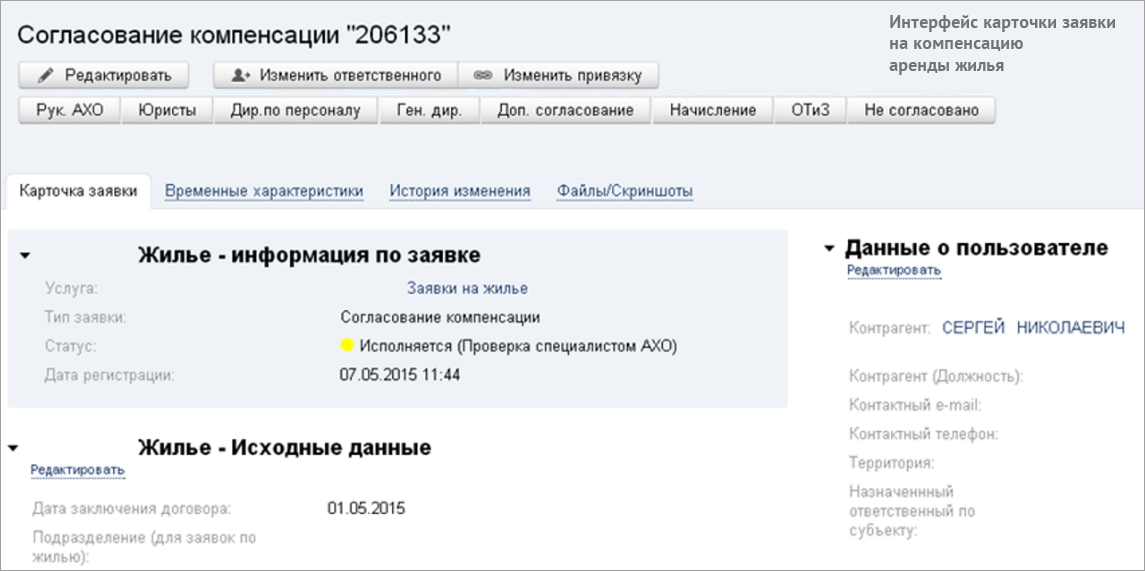
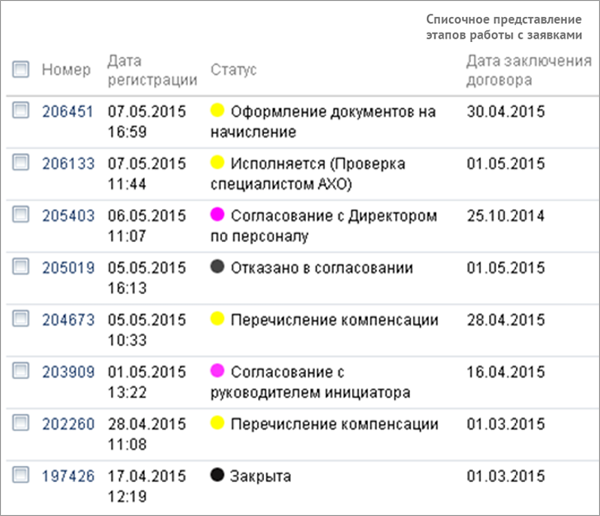
Case 4. Automating the process of internal work of the personnel department
What is at the start
Large geographically distributed holding. Staffing service - more than 40 people. The main means of solving internal issues is e-mail. Task control is not automated.
Set goals
- Automate calls to work with staffing, KPI cards and distance learning system.
- Provide access to applications only to a specific group of employees.
What is done
Created special profiles. We adjusted the visibility of objects in accordance with the rights for customers and performers. We trained staff in the program.
Summing up
It has been more than 3 years of using the program. Employees already do not imagine how they used to work without it. The benefits to the business are also clear - any delay in the work of the personnel service negatively affects the business.
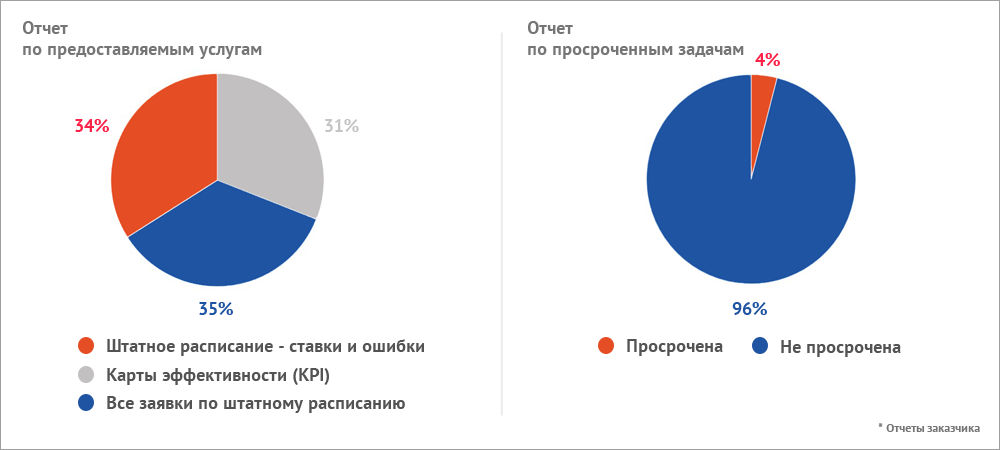
Case 5. Automation of ordering dishes in the dining room
And for dessert. We manage the processes of ordering dishes in the dining room. Why is this business? What gives? At first glance, this is just a simple convenience for the staff. And if you count?
What is at the start
Dining room of a large company. Attendance - more than 200 people per day. The main task: to keep records of orders in a unified information system in order, on the one hand, to save employees' working time, and on the other, to increase the profit of the canteen through convenient service.
Set goals
- To pre-order dishes through the service desk.
- Develop an order form (including date / time selection, input of additional requests).
- Provide tools for processing received orders.
What is done
The head of the dining room has prepared technical requirements, menu options. Agreed on the application form, life cycle. Made all the necessary settings. A week later, staff happily ordered dishes through the system.
Summing up
- Accumulated statistics allows you to determine the popular dishes, make adjustments to the menu, develop personalized offers, plan purchases and the load on the canteen workers.
- Increased employee loyalty to the dining room (fewer queues, no risk to remain without lunch, monitoring food costs).
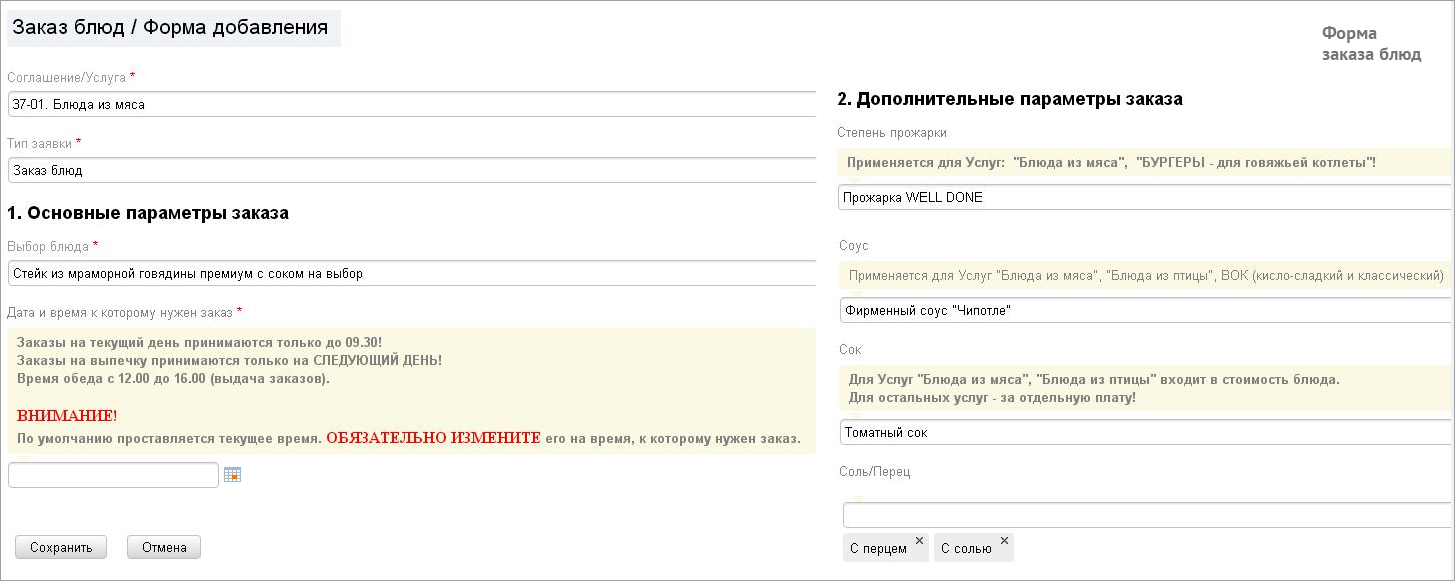
To conclusions
Do not be afraid to look wider when we talk about the service approach to the service desk .
Recently on Habré came across an article on a related topic . I liked the idea, I quote:
“Do you have an IT service desk that tensely resolves IT incidents?” Maybe now is the time to think about what you can create even more value for your organization, expanding the definition of the incident, including deviations from any norms in the products of business processes without taking into account the reasons that caused it. This all can help IT become more involved in the overall business of the organization and be seen as a real partner in achieving business results, as opposed to when it bears only the functions of a service unit, which only does repair the breakdowns. ”
Our own project experience of recent years shows that we are already on our way: we work not only with IT (and not IT) with incidents. We are trying to become a real business partner. And we do not just declare it, but we offer concrete steps and IT recipes.
Source: https://habr.com/ru/post/350178/
All Articles